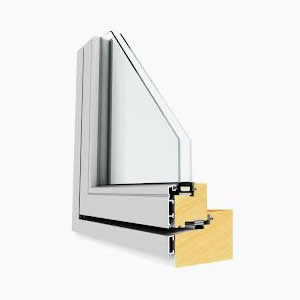 [/dropshadowbox]
[/dropshadowbox]
Clad windows are available in a few standard colors, usually white, brown, and tan. Some manufacturers offer additional colors as “standard.” Others offer more color choices at an up-charge. A couple of manufacturers offer custom colors at an even higher costs. Most show no cladding on the interior side of the window. Only clear, natural wood is visible. One manufacturer we know of wraps the entire sash of the window in vinyl so some of the vinyl cladding shows on the interior. This may be a good or a bad thing, depending on your point of view. Still, it’s a good idea to double check the particular windows you are selecting so you won’t have any surprises later. Go to a showroom to see the windows in person rather than relying on photos on a website or in a magazine advertisement.
As good as they are, these windows are not right for every project. The less expensive window option is unclad windows. The exterior parts are primed wood that must be painted every five or six years. Painting costs money, but the savings on the initial cost might be worth it if your budget simply keeps clad windows from being an option. Painted wood windows also allow you to select a truly unique color. That might be reason enough to choose them.
There are a few manufacturers that offer windows with permanent paint-type exterior finish, usually only in white. Composite wood windows come prefinished on the interior and also usually only in white. It is a much more durable finish than regular paint and will be nearly maintenance-free. If you don’t like white, this prefinished surface can be painted in any color you choose later. And the paint will hold up longer than paint on unfinished wood.

